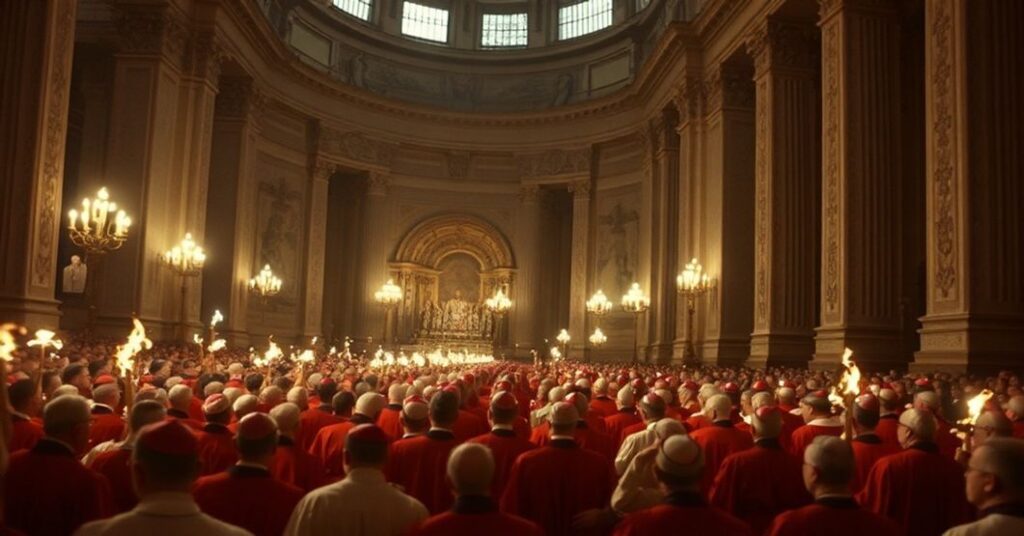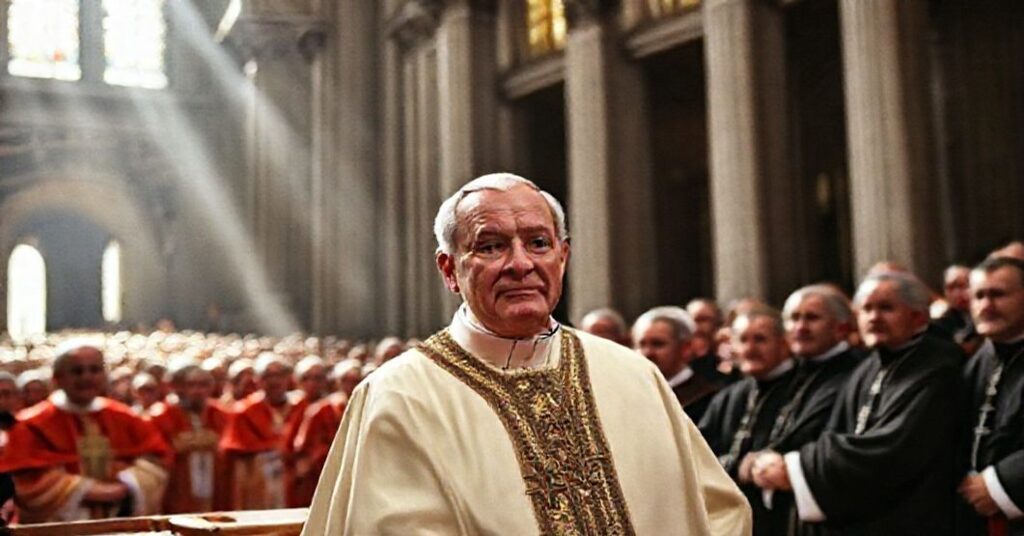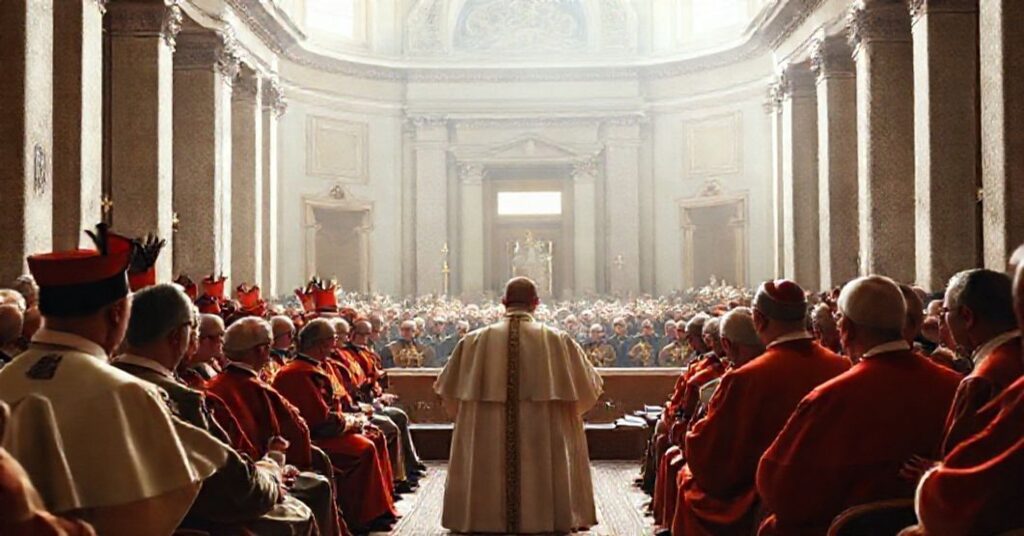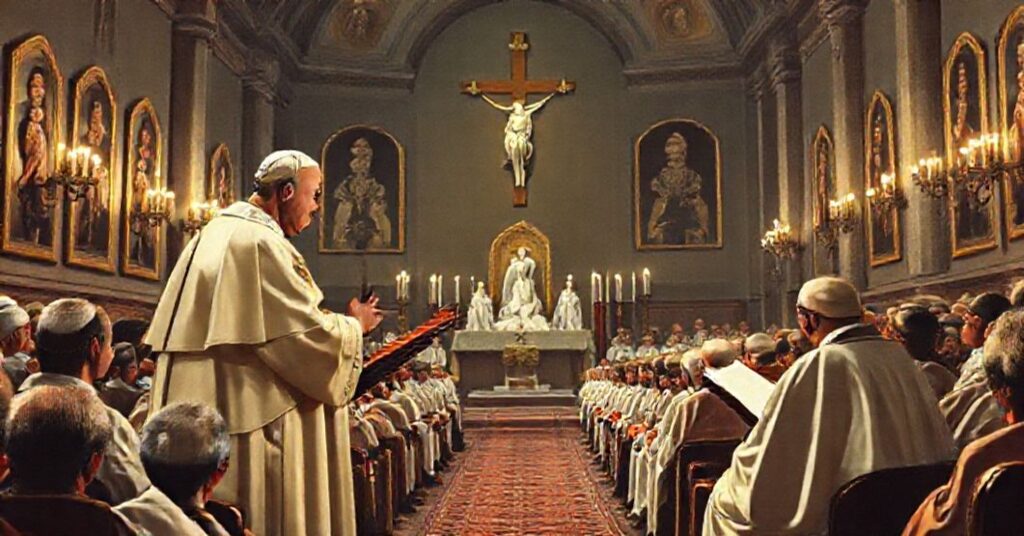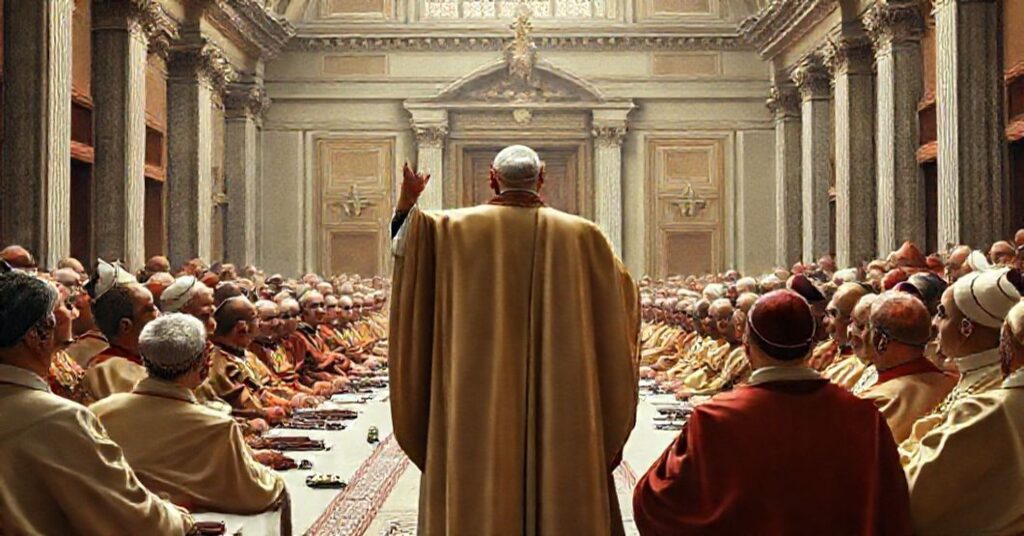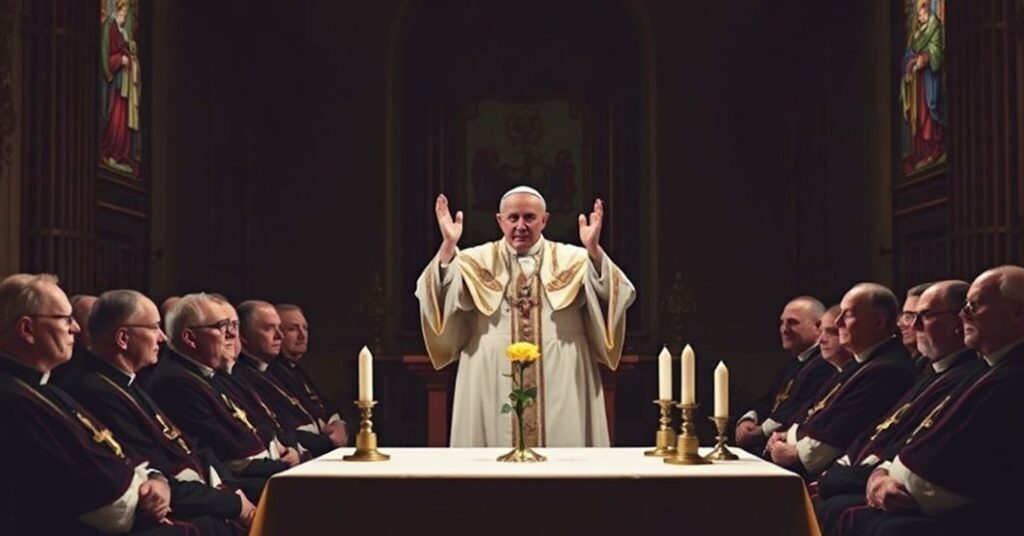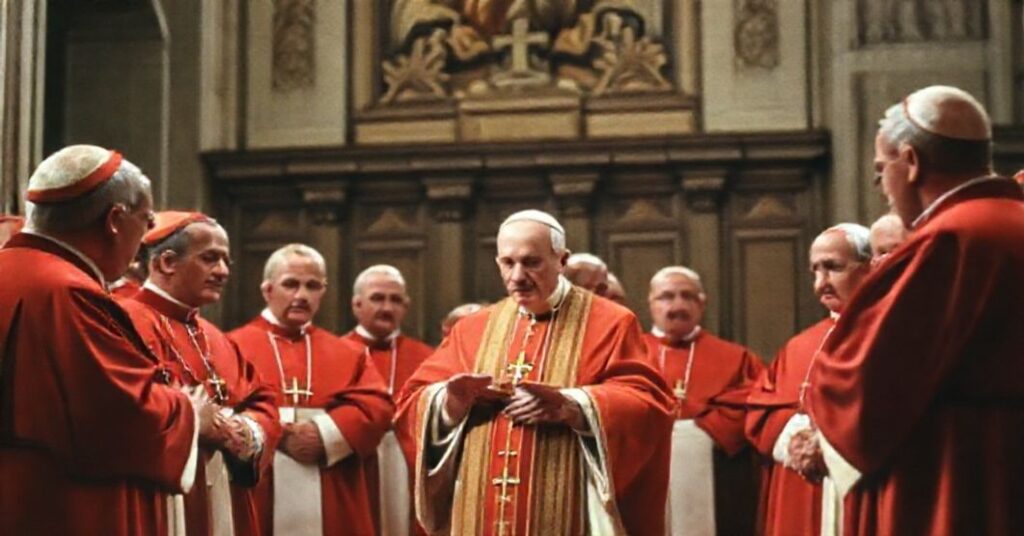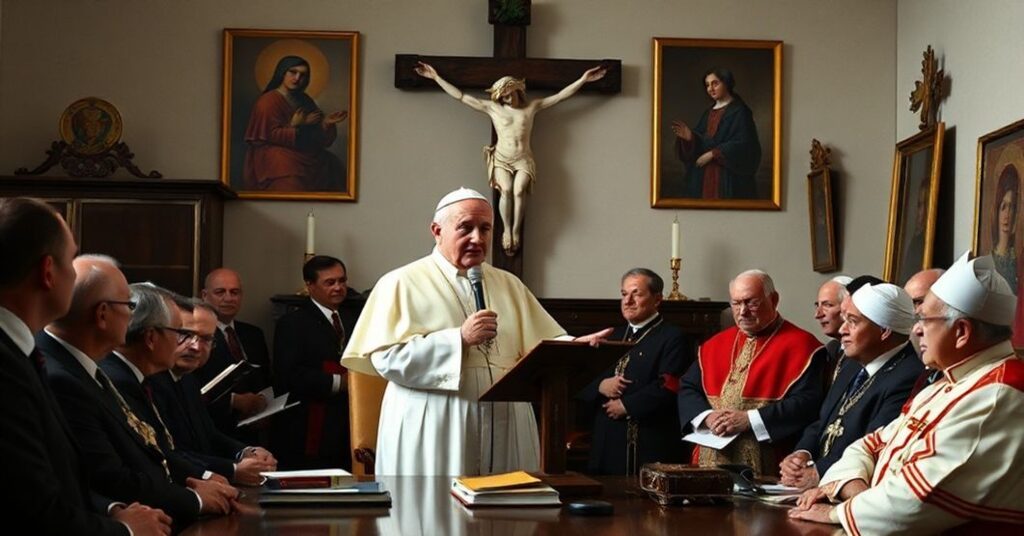On June 20, 1962, John XXIII, at the close of the seventh session of the Central Preparatory Commission for Vatican II, delivers a triumphant allocution: he rejoices that three years of preparatory work have been completed; he recalls the “spark” of the council’s idea at St Paul Outside the Walls in 1959; he praises the commissions, laity, and experts; he presents the council as a “mystical tower” promising peace, abundance, unity, and renewal for the Church and the world; he exhorts the bishops to return home and inflame enthusiasm, prayer, and confidence in the approaching council, proposing meditations especially on the Gospel of John as spiritual preparation. The entire discourse is a serene self-congratulation of a new project that, under pious language, already displaces the divine constitution of the Church with a humanistic, democratized, media-driven enterprise — the embryo of the conciliar sect that would soon eclipse, in men’s eyes, the visible rights of Christ the King and the immutable Faith.



